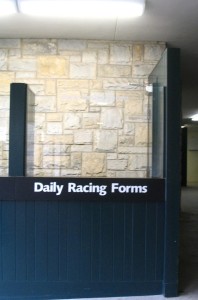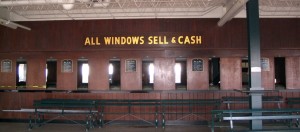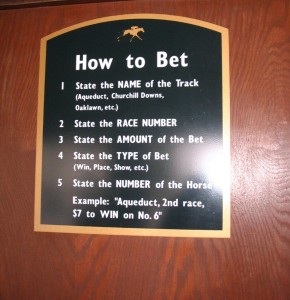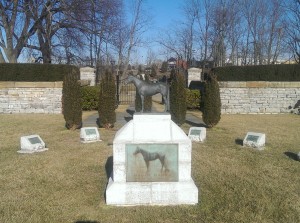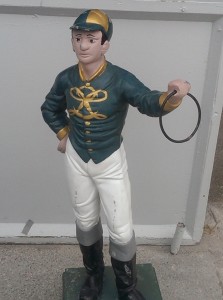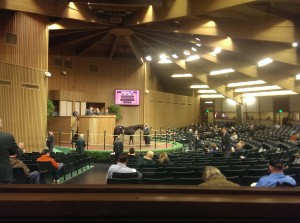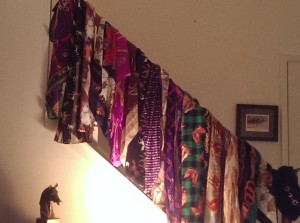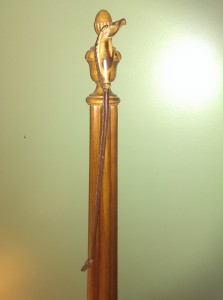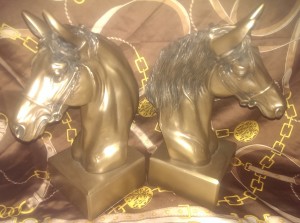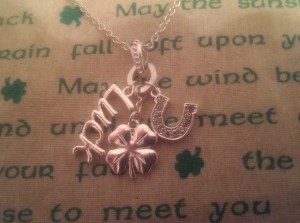Next weekend is Superbowl XLIX. I watch the game for the commercials and a good time with my friends, but it is generally a day I can make a little dough too. Sporting events lead to some fun betting for sure. Sometimes, I like to gamble at the races.
I absolutely love to go to the track for live racing. I can not get enough of the people, the horses, and the food. I like to check out everyone’s fashion, meet new folks, catch up with old friends. The horses are simply amazing to take in, I am in awe with their strength and beauty. They are true athletes. The edibles are delicious and irresistible. Then, there is the gift shop. Oh my, I want just about everything in there. One way to limit my spending, at the track stores, is to try to win the money I use there. It is pretty cool to fund a new piece of equestrian jewelry with the reward of placing the right bet. How does one make a good bet? Well, there is no easy answer for that, bummer. The good news is you do not have to spend a lot or be an expert to take a chance. There are many strategies and superstitions to choosing the winner.
First off, pick a track. In the United States there are Thoroughbred racetracks in 29 states. In Kentucky alone we have 5 tracks. It seems no two organizations agree on the number of tracks currently being utilized. The National Thoroughbred Racing Association reports 55. I enjoy live meets best but off-site betting is hugely popular as well. You can go to the track or drive-thru site or casino, use your smart phone or tablet and other computer devices, befriend a bookie, get an account with Television Games Network or a similar site, or all of the above to get your wagers in.
Next, pick the race number. Simply put, you are just choosing the particular race you wish to wager on. Superstition plays heavily here. You may have a tip to bet $5 on the #5 horse in the 5th race., 5 on the 5 in the 5, etc. Other factors that need looking at are: the purse for that race, the length of the race, how many horses are running that race, is it the feature race, does that race have a special wager type, what surface are the horses running on, what is the condition of the track, etc.
Then choose how much to spend and the type of bet. I am a cheap bettor. Most of my bets are $6 or less. Because, too often I go for a horse with good odds I don’t get a lot of return on my money but I don’t lose much either. I am working on becoming a smarter bettor. I still want to minimize the cost of my bet but I need to work on maximizing my potential payoff. This is where you need to decide if you expect the horse to win (be the 1st to finish), place (the 1st or 2nd horse to cross the finish line) or show (the first thru third horse to finish). You can also choose “across the board” which will allow you to collect if your horse shows at the rate for which it finished. Getting fancier, you can choose to exacta which is to pick the 1st and 2nd winner of any race. Choosing trifecta will let you choose the first 3 horses in correct order. If you pick the 1st four, in the right order, it is a superfecta. Any of these options from exacta to superfecta can be boxed because that allows you to pick the correct horses but not the correct order. There are more options like the daily double, pick three, pick four, or pick 5 that allow you to choose the winners of consecutive races. Occasionally, there are special options too like a super high five (and a box option) that will let you pick the first five horses to finish in one particular race. Wheels and keys are options too. Wheels let you pick more horses. Keys let you pick more orders. Watch the math here, you might start with a inexpensive minimum but the number of horses and different winning combinations actually cause the bet to be multiplied to a higher cost. Be sure to check the program for each venues options.
Finally, pick the number of the horse. Are you picking because you like the name, number, the saddle cloth color assigned to the number, the horse, the jockey, the trainer, the breeder, the location the horse was bred? Arghhhh, so many choices! Do you like the name? Does the name give you a gut feeling of being lucky or speaking to you? Numbers and colors may be a feeling of luck. However, it also determines what position the horse gets at the gate. Considering the horse, color can be a big factor. You will often hear people pulling for a grey. You may be interested in looking at the horses behavior in the paddock or before it reaches the gate. Feeling frisky? Pedigree is an important consideration. Does the horse come from a long line of winners? What medications does the horse take and how or why should you care about that? How much weight is the horse carrying? What is the horse’s age and gender? What are all of the former lifetime records? How about the workout record? What is the jockey’s name and what do we know about him or her? What is their weight and what equipment are they carrying? Who trained the horse and do we know anything about their winning history and other biographical information? What about the breeder, and where did the breeding take place? All of these considerations and more come into play. This is why it is important to learn how to read the program. A good program will have a breakdown of a sample entry with explanations of the information and abbreviations used. However, don’t blow off tips and gut feelings. All the handicapping skills you develop still don’t lead to fail proof betting. Long shots can lead to great payouts.
Now, go have some fun! Remember to gamble responsibly if you choose to gamble at all. If it seems like a problem it probably is. Call 1-800-522-4700 for the National Gamblers Helpline if needed. Have a blast at the gift shop rewarding yourself for your skills and/or luck. Or, go straight to the gift shop and get a return on your money dollar per dollar. If you avoid both, you can go have a great time from free to a minimal entry fee. Love the races. Good luck to you all!
Share This:


